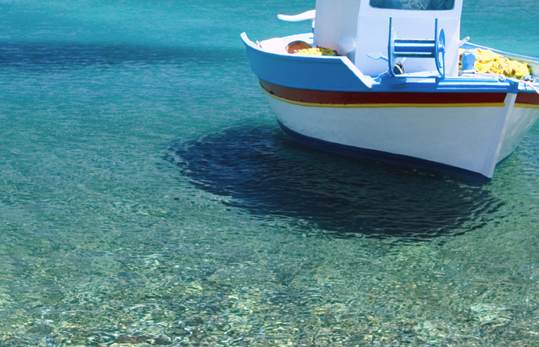Patmos Island Name
There are many versions concerning the name of Patmos, the most popular of which are connected with God Poseidon and Goddess Artemis.According to the Greek mythology, the word Patmos symbolizes the fact that God Poseidon stepped his feet (the verb “pato” means “step” in Greek) on this island for the first time.
Another myth has it that Patmos or Pantos was another name for Goddess Artemis. Artemis, together with Poseidon were supposed to be the first inhabitants of the island, thus the island was named after that.
Another tradition supports that Patmos owes its name to Latmos, a mountain of Karia (an area of Mikra Asia opposite the island), whose worshipped Goddess Artemis. A variation of that tradition states that Patmos was a word used in the language of the inhabitants of Karia and meant “area with coniferous trees”.
Inhabitance History
The first inhabitants of Patmos according to Greek mythology were Poseidon and Artemis. In the 3rd millennium B.C. Karians came to Patmos from Asia Minor, followed by Dorians after 1400 B.C. and Ionians from Militos. In 95 A.C. Ioannis Theologos was exiled in Patmos, heard the voice of God and wrote the Apocalypse at the renowned Cave of the Apocalypse.
Prehistoric & Hellenistic years
Prehistoric ruins at Kastelli prove that Patmos was already inhabited in the Middle Bronze period. Karians were the first confirmed inhabitants of the island, in the 3rd millennium B.C., followed by Dorians and Ionians. Patmos was very powerful in economic terms during the Hellenistic years, when it belonged to the territories controlled by Miletus, and Lakedemonians used to refuge to the island during the Peloponnesian War. Right after that, pirates invasions devastate the island and very few of its former inhabitants remain on it. In the 2nd century B.C. the Romans use Patmos as an exile place. The first Christians Era
A new period of glory began in 95 A.C., when Ioannis Theologos was exiled in Patmos and wrote the Apocalypse. Christians then started coming to the island building many orthodox churches that have remained till nowadays. After the Christian “invasion” between the 6th and 9th century A.C. the island is depopulated and attacked by pirates. The Years of Prosperity
10th -12th century: In 1088, Patmos was granted to Osios Christodoulos, who founded the Monastery of Saint Ioannis Theologos. This was the beginning of a period of grand prosperity that built the basis of growth and welfare for the centuries to come.Venetian Occupation and Other Conquerors
Patmos was a powerful commercial center, occupied in 1207 by the Venetians and became a semi-autonomous state. The “knights of Saint John” occupied the island in 1340 and kept it until 1522, when the Ottomans came. Venetians reoccupied Patmos in 1659 and almost destroyed it. 17th-18th century: A new period of prosperity, during which “Patmiada Scholi”, meaning “The School of Patmos” in Greek, is founded in 1713 by Makarios Kalogeros (Makarios the Monk). For many years this school was providing high level education to Greeks and was a place of maintaining and passing from generation to generation the Greek culture and traditions. In 1770, after the end of the wars between Venetians and Ottomans, Patmos came under the Russian rule. Recent History Patmos participated in the Greek revolution in 1821 but since the treaty of London did not include the Dodecanese Islands in Greece’s borders, Patmos fell again under Ottoman domination. The island was under the Turkish rule till 1912, when the war between Italians and Turks took place and Italians took over control of all the Dodecanese.
After Italians, the Germans came to Patmos and took the authority till 1945 when the island was freed at last and remained independent and autonomous for only a few years. In 1948 all Dodecanese Islands were integrated in Greece’s territory and have remained like this since then.
Christmas in Greece is an experience in itself as it is a holiday celebrate...
Read more ›








 BACK TO LIST
BACK TO LIST